‘Copter Custody
County Sheriff and Fire Scrap over Future of Aviation Program
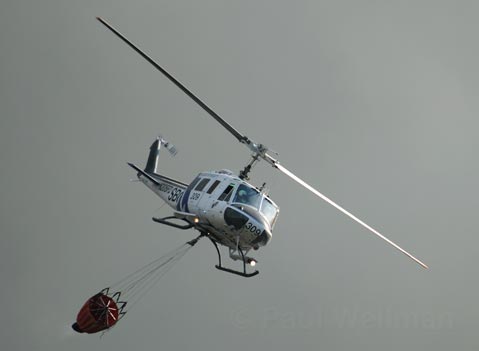
It’s been well documented how helicopter missions in the first days of November’s Tea Fire helped firefighters on the ground save homes. During those 80-plus early drops, units from both the Santa Barbara County Sheriff’s Department and Fire Department risked their lives flying in 75-mile-per-hour winds to fight the blaze.
Last month, the two units joined forces again to battle the Jesusita Fire. Choppers droned steadily throughout the fire as some units dropped water on the blaze while others flew intelligence and mapping missions.
And just two weeks ago, personnel from both the Fire and Sheriff’s departments received the H. Thomas Guerry Award for Valor for their work. The commendation of the fire crews marked the first time in the 40-year history of the award that it was given to personnel in non-law enforcement agencies.
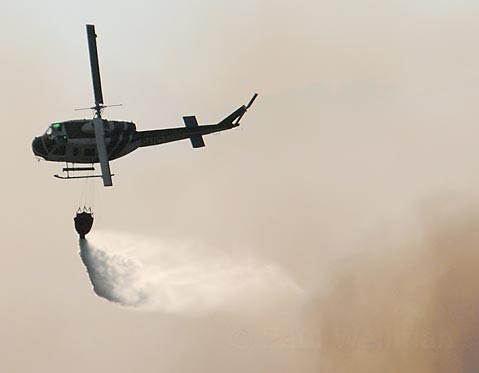
But all is not well in the air up there, and sides are being taken in the Santa Ynez Airport hangar that houses each department’s helicopters. A feud between Sheriff’s and Fire officials has been heating up for months, with politics and budgets fueling the flames.
In 2004, the two departments began a combined aviation program that continued until shortly after interim Fire Chief Tom Franklin took office and withdrew from the combined program in February. Since then, Sheriff’s personnel no longer use Fire’s equipment, and Fire hasn’t been asking Sheriff Bill Brown for assistance. Those inside the Fire Department allege it was paying a disproportionately greater cost, while the Sheriff’s Department was encroaching on Fire’s duties and overspending its budget.
Chain-of-command issues at the hangar are equally as problematic as those involving the budget. In its initial formation, the day-to-day supervisor was a sergeant with the Sheriff’s Department, with that position reporting to a nonÂ-hangar-based fire chief. But in reality, fire personnel would just report to fire heads, while sheriff’s personnel would report to sheriff’s management. “We tried this experiment and it failed miserably,” said Curt Warner, who worked in the fire aviation unit for eight years before retiring in early 2009.
This dissatisfaction with the current state of the program has raised several questions about its future, including whether a power play is being made by the sheriff to take over the program, as the county must decide who can run the program efficiently and cheaply.
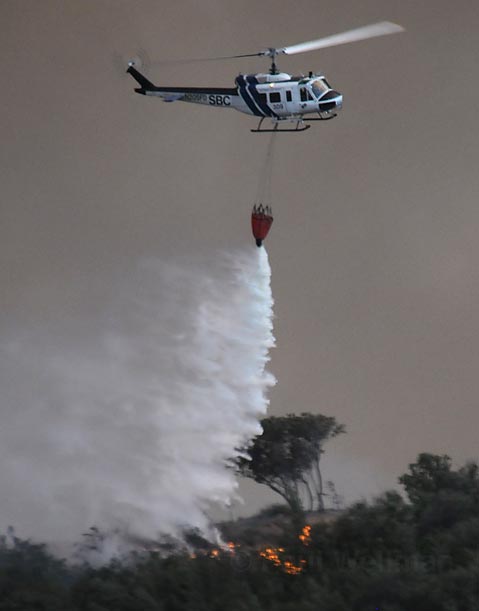
The Fire Department’s main priority is, of course, fire suppression. Additionally, rescues fall under the purview of the fire department. They currently utilize two UH-1 helicopters, commonly known as Hueys, which are primarily rescue ships with a large payload and medical interior and can also do water drops on fires.
Sheriff’s helicopters, on the other hand, help in pursuits, search for lost persons and large marijuana-growing operations, and other law enforcement activities. Currently, the Sheriff’s Department has two OH-58 helicopters -smaller aircraft ideal for the kind of operations the sheriff conducts. Currently undergoing refurbishment is a larger Huey, which should be ready in the coming months. The Huey will have the same capabilities, including those for rescue missions, as Fire’s current aircraft. Some fire officials believe, without those rescue capabilities, the sheriff is irrelevant. As one put it, “What we do is sexy. What the sheriff does is not.”
The matter is decidedly more complicated for Franklin than it is for Sheriff Brown, who has the benefit of being an elected official. Brown reports only to the voters and is free to say and do however he pleases. Franklin, however, must tread around bosses such as CEO Mike Brown and the Board of Supervisors.
Furthermore, Franklin, who didn’t return numerous phone calls last week, is also in the midst of a fight for his job. He has been interim fire chief since November 2008, and the county has had an open, national recruitment to find a permanent fire chief since February. Franklin is one of two finalists for the job, competing with current Los Angeles County Deputy Chief Mike Dyer. The two were interviewed at a June 1 closed-session supervisors’ meeting.
How the two handle the helicopter situation seems likely to have come up in the interview sessions, and some believe Franklin won’t take the job if he can’t split the program. With that said, his silence seems to indicate a hesitancy to rock the boat.
Those closest to the situation-the aviation unit personnel themselves- wouldn’t comment. Sgt. Alexander Tipolt in the Sheriff’s aviation unit directed calls to the administration office. Calls to the Fire Department’s aviation unit were not returned.
Complicating matters is the budget. Beginning June 8, supervisors will be trying to resolve a multimillion-dollar deficit. The money to continue a combined aviation program-which would cost $1.95 million for three crews-is currently in the 2009-10 budget, assistant CEO John Baker explained, so it will be up to the supervisors to determine how to proceed.
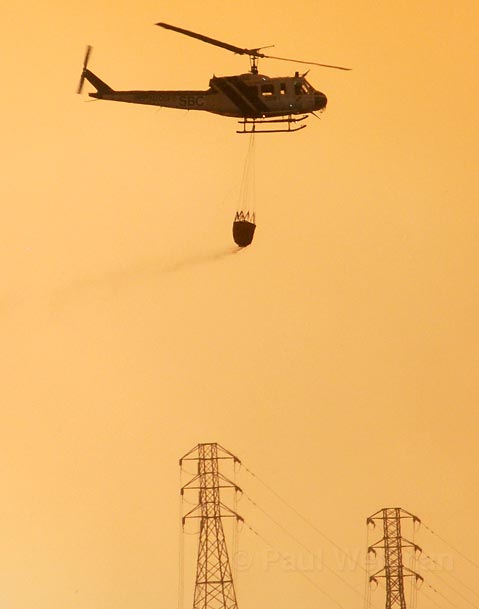
The Fire Department receives the majority of its funding from property taxes. For the upcoming year, only 3 percent-less than $1.7 million-of the department’s money comes from the General Fund. The Sheriff’s Department receives $35 million-one-third of its total budget-from the General Fund. Retired fire captain Warner claims that a combined unit opens up access to money that would normally be reserved for the Fire Department. Some have suggested this makes the sheriff’s plan more ideal for the CEO’s office. “If Mike Brown can use property taxes to offset Sheriff’s expenses, he is saving the county General Fund money,” Warner said. Baker, however, said funding via property taxes and the General Fund wasn’t analyzed in their initial report.
Brown favors a blended unit. “Helicopters are expensive,” he explained. “It’s important to get dual, triple use out of them.” But if the unit is split, Brown thinks the entire operation should come under his purview. “We have the broader mission spectrum and more equipment,” he explained, noting that of its total missions, Fire can only fly 10 percent for reasons unrelated to fire. “Law enforcement agencies don’t have those restrictions.”
If the county ultimately decides against a combined unit, the Sheriff’s Department recommends that it should run fire suppression, search and rescue, and law enforcement operations all at a speculative cost of $1.55 million. Under the sheriff, three helicopters-one Huey and two OH-58s-would be used, with the option to replace one of the OH-58s with a Huey currently being pursued by the Fire Department.
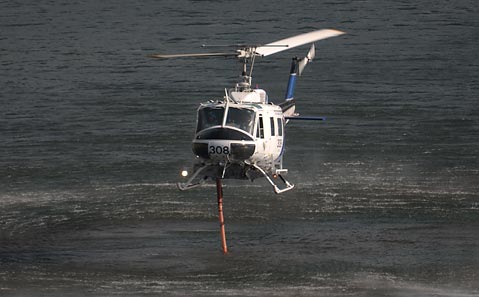
The Fire Department’s most recent proposal would cost $1.43 million plus additional billing to the Sheriff’s Department for excess hours, utilizing three Hueys and one OH-58 helicopter. The proposal, which Baker said is currently being modified by Franklin, would result in a diminished law enforcement mission, according to county staff. Both departments’ most current reports should be available June 9.
Numbers provided by the Sheriff’s Department show its personnel flew both Fire and Sheriff’s department choppers for 486.5 hours in 2008, the latest available data. Fire had a combined total of 298.4, though only 19 of those hours were in Sheriff’s choppers, which are less than ideal for fire missions. Fire helicopters were used for 27 law enforcement calls, and 52 search and rescue calls. Sheriff helicopters, on the other hand, went on 10 fire missions and seven search and rescue missions.
A Fire spokesperson said the department would wait for the June 16 hearing to comment.


